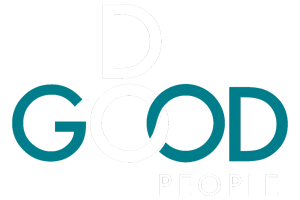Robust internal communication is essential for embedding sustainability into the fabric of an organization, as it ensures that sustainability goals are not just top-down directives but are embraced and acted upon at every level.
Table of Contents

The importance of internal communication in sustainability
Effective internal communication is the cornerstone of a successful sustainability strategy within any organization. When sustainability goals and initiatives are clearly communicated, they become integral to the company’s culture, guiding daily operations and decision-making processes.
This alignment ensures that all employees, from executives to frontline staff, understand their roles in achieving the company’s sustainability objectives. Furthermore, clear internal communication fosters a sense of ownership among employees, empowering them to act with purpose and creativity.
When employees are informed about the company’s sustainability efforts and understand the impact of their contributions, they are more likely to adopt sustainable practices in their daily work. This engagement not only drives the success of sustainability initiatives but also fosters a culture of continuous improvement and innovation.
Do your employees know how to contribute to the ESG strategy?
In summary, robust internal communication is essential for embedding sustainability into the fabric of an organization. It ensures that sustainability goals are not just top-down directives but are embraced and acted upon at every level, leading to meaningful environmental and social impact.
Common barriers to effective sustainability communication
Even with strong sustainability goals, many organizations struggle to communicate them effectively within their teams. Without clear, consistent messaging, employees may feel disconnected from the company’s sustainability efforts, leading to misalignment and lack of engagement.
Let’s take a look at some of the most common barriers that may hinder internal sustainability communication:
Lack of clear structure
Top-down communication
Cultural & language differences
Many organizations lack a defined process for sharing sustainability updates. Without structured communication, important information can get lost, causing confusion and inconsistent engagement.
When sustainability messages are only delivered from leadership without interactive discussions, employees may feel that sustainability is a corporate mandate rather than a shared responsibility.
In global companies, employees come from diverse backgrounds. A one-size-fits-all communication approach may not resonate equally or translate effectively across all teams.

Strategies to enhance internal sustainability communication
Overcoming communication barriers requires a strategic approach that ensures sustainability messages are clear, engaging, and inclusive. A well-structured communication strategy not only informs employees but also inspires them to take action. Below are key strategies to strengthen internal sustainability communication.
Develop a unified vision
A clearly defined sustainability vision helps align employees with the company’s long-term goals. This vision should be integrated into company values and communicated consistently through meetings, training sessions, and internal platforms. Leaders should reinforce the message by connecting sustainability goals to employees’ daily responsibilities, making them more relevant and actionable.
Encourage two-way communication
Sustainability communication should not be a one-way directive from leadership. Creating open channels for feedback such as sustainability committees, discussion forums, or digital platforms empowers employees to share ideas and concerns. Companies that actively listen to employees’ input foster a culture where sustainability is seen as a shared responsibility rather than a corporate requirement.
Leverage technology for engagement
Digital tools can make sustainability communication more interactive and measurable. Platforms that use gamification, for example, are able to engage employees and turn sustainability challenges into rewarding experiences. Tracking tools also allow companies to monitor participation, provide feedback, and showcase progress in real time, making sustainability efforts more transparent and motivating.
Grassroots ESG or how employees can lead sustainability efforts
Benefits of effective internal sustainability communication
One of the most significant benefits is increased employee engagement. When employees understand the company’s sustainability goals and see how their individual actions contribute to them, they feel more connected to the mission. This sense of purpose not only boosts motivation but also encourages proactive participation in sustainability efforts.
Beyond engagement, clear sustainability communication enhances operational efficiency. When sustainability goals are well-integrated into business processes, teams can work more cohesively, avoiding redundancies and aligning their efforts toward shared objectives. This clarity helps departments collaborate better, ensuring that sustainability initiatives embedded across the organization.
Moreover, when employees are well-informed, they can make more sustainable decisions in their respective roles, whether in procurement, production, or corporate strategy.

Another crucial advantage is a stronger corporate reputation. Companies that effectively communicate their sustainability efforts internally are better equipped to share their progress externally in a transparent and credible manner. Employees act as brand ambassadors, reinforcing the company’s commitment to sustainability in their interactions with customers, partners, and stakeholders.
In an era where consumers and investors prioritize sustainability, having a workforce that fully embraces and articulates the company’s environmental and social commitments strengthens overall brand trust and market positioning.
Ultimately, internal sustainability communication is not just about informing employees, it’s about fostering a culture of action, alignment, and accountability.







